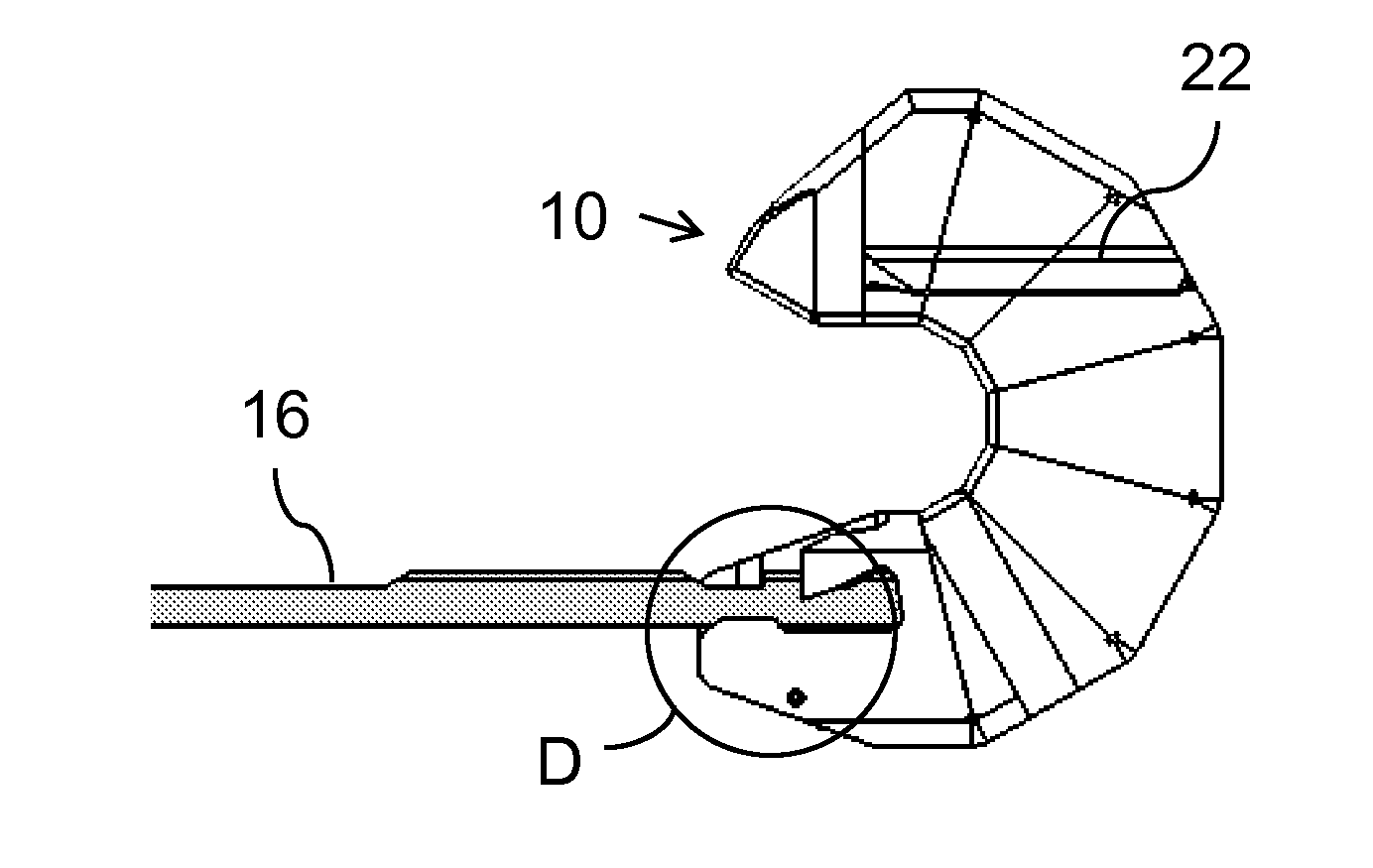Device and method for spinous process distraction
a technology of spinous process and device, applied in the field of spinous process distraction, can solve the problems of increasing the trauma of the procedure, the failure to correct the latero-lateral alignment of the device, and the non-trivial deployment of the element via a dorsal-angled approach
- Summary
- Abstract
- Description
- Claims
- Application Information
AI Technical Summary
Benefits of technology
Problems solved by technology
Method used
Image
Examples
Embodiment Construction
[0036]The present invention is an implant, a system for implantation, and a corresponding method, for maintaining a minimum inter-spinous-process spacing.
[0037]The principles and operation of implants, systems and methods according to the present invention may be better understood with reference to the drawings and the accompanying description.
[0038]Referring now to the drawings, FIGS. 1A-7B show various parts of an implant, a corresponding delivery system, and the corresponding manner of deployment of the implant, constructed and operative according to the teachings of the present invention, for maintaining a given minimum inter-spinous-process spacing between adjacent spinous processes of a human or animal subject.
[0039]Generally speaking, the implant is formed from an implant body 10 including a plurality of segments 12 hingedly interconnected so as to assume a straightened state (FIGS. 2, 3A and 4A) for delivery along a conduit and a curved deployed state (FIGS. 3C, 4C and 5). A...
PUM
 Login to View More
Login to View More Abstract
Description
Claims
Application Information
 Login to View More
Login to View More - R&D
- Intellectual Property
- Life Sciences
- Materials
- Tech Scout
- Unparalleled Data Quality
- Higher Quality Content
- 60% Fewer Hallucinations
Browse by: Latest US Patents, China's latest patents, Technical Efficacy Thesaurus, Application Domain, Technology Topic, Popular Technical Reports.
© 2025 PatSnap. All rights reserved.Legal|Privacy policy|Modern Slavery Act Transparency Statement|Sitemap|About US| Contact US: help@patsnap.com



